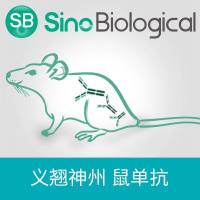Analysis of SH2 Ligands and Identification of Sites of Interaction
互联网
504
The molecular analysis of cell signaling pathways requires an understanding of what each component in the pathway is, the manner in which they interact, and how these interactions serve to propagate the signal. Cytokine signaling begins with the binding of an extracellular cytokine to a specific cell-surface receptor. This usually results in the activation of intracellular protein kinases, which phosphorylate protein substrates important for the propagation of a cell signal. One mechanism by which protein phosphorylation regulates the transmission of a cell signal is through the creation of docking sites recognized by other signaling proteins. Such sites promote the association between protein molecules leading to the formation of active signaling complexes. Src homology 2 (SH2) domains are protein modules of approx 100 amino acids that recognize and bind to specific phosphotyrosine-containing polypeptide sequences (1 ). SH2 domains are recruited to tyrosine-phosphorylated proteins in their normal physiological setting; however, short synthetic phosphopeptides derived from these cellular docking sites contain all of the necessary binding determinants to interact with SH2 domains. This fact has allowed the identification of SH2 binding sites on tyrosine-phosphorylated proteins based on the analysis of SH2 domains interacting with phosphopeptides. Structural and functional characterization of these interactions has led to the observation that a central phosphotyrosine (pY) residue is the defining feature of ligands recognized by all SH2 domains; however, specific binding of a particular SH2 domain to a tyrosine-phosphorylated protein is dependent on the primary sequence in the immediate vicinity of the pY residue, particularly the flanking sequence immediately C-terminal to the pY residue (2 ).









